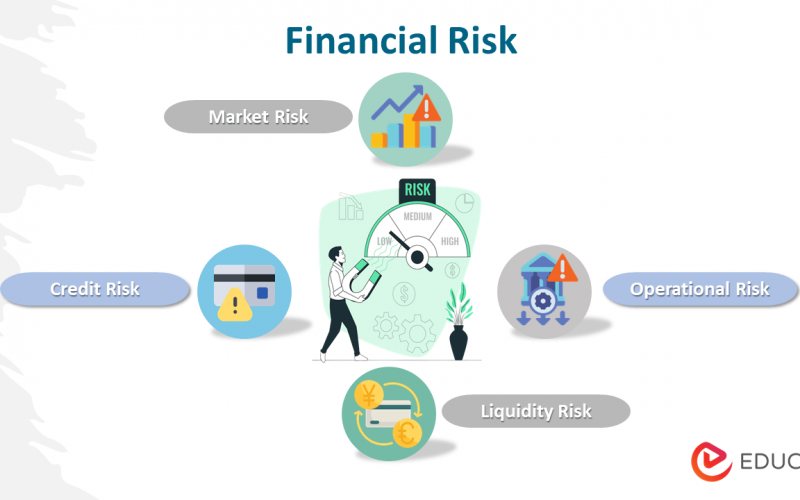Risk management in banks and financial markets involves identifying, assessing, and mitigating various types of financial risks. Here are some key types of financial risks that banks and financial institutions commonly face:
- Credit Risk: Credit risk refers to the potential loss arising from the failure of a borrower or counterparty to fulfill its contractual obligations. It includes the risk of default on loans, bonds, or other credit exposures. Banks assess credit risk through credit analysis, credit ratings, and collateral evaluation. Risk mitigation measures include diversification of credit exposures, setting appropriate credit limits, and implementing credit risk management practices.
- Market Risk: Market risk arises from adverse movements in financial market prices, such as interest rates, exchange rates, commodity prices, and equity prices. It includes three primary subcategories:a. Interest Rate Risk: Interest rate risk is the potential impact on a bank’s earnings and capital due to fluctuations in interest rates. Banks manage interest rate risk through strategies like asset-liability management, hedging, and interest rate derivatives.b. Foreign Exchange Risk: Foreign exchange risk arises from fluctuations in exchange rates, leading to potential losses in cross-border transactions or investments. Banks manage foreign exchange risk through hedging, netting, and currency derivatives.c. Commodity Price Risk: Commodity price risk refers to potential losses resulting from changes in the prices of commodities, such as oil, gas, metals, and agricultural products. Banks exposed to commodity price risk employ hedging techniques and derivatives to manage their positions.
- Liquidity Risk: Liquidity risk is the risk of not being able to meet funding requirements or fulfill obligations as they come due. It can arise from a lack of marketability of assets, insufficient cash flow, or an inability to access funding sources. Banks manage liquidity risk through liquidity management practices, cash flow forecasting, maintaining adequate liquidity buffers, and establishing contingency funding plans.
- Operational Risk: Operational risk is the risk of losses resulting from inadequate or failed internal processes, systems, or human factors. It includes risks associated with technology failures, fraud, legal and compliance issues, and human error. Banks address operational risk through robust internal controls, risk monitoring systems, staff training, and contingency plans.
- Counterparty Risk: Counterparty risk refers to the potential loss arising from the failure of a counterparty to fulfill its obligations in a financial transaction. It includes the risk of default by trading partners, derivative counterparties, or clearinghouses. Banks manage counterparty risk through credit assessments, collateral requirements, and netting agreements.
- Compliance and Regulatory Risk: Compliance and regulatory risk stems from non-compliance with laws, regulations, and industry standards. Failure to adhere to regulatory requirements can result in financial penalties, reputational damage, and legal consequences. Banks implement comprehensive compliance programs, including internal controls, risk assessments, and monitoring systems, to mitigate compliance and regulatory risks.
- Reputational Risk: Reputational risk is the potential loss of reputation or public trust due to negative public perception, adverse publicity, or unethical behavior. Reputational risk can significantly impact a bank’s business and relationships. Banks manage reputational risk through ethical practices, strong governance, transparent communication, and proactive reputation management strategies.
Risk management in banks and financial markets involves a combination of risk identification, risk measurement, risk monitoring, and risk mitigation strategies. It requires a comprehensive framework that integrates risk management practices into a bank’s overall business strategy, decision-making processes, and risk culture. Effective risk management helps banks maintain financial stability, protect shareholder value, and meet regulatory requirements.
SHARE
